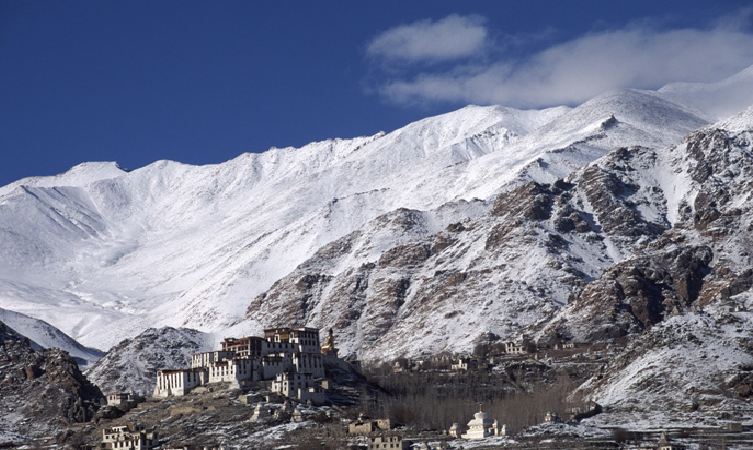
Likir Monastery, also known as Likir Gompa, is a prominent Buddhist monastery located approximately 52 kilometers west of Leh. The monastery is the seat of Ngari Rinpoche, who is the younger brother of the Dalai Lama. Founded in the 11th century by Lama Duwang Chosje, Likir Monastery belongs to the Gelugpa (Yellow Hat) sect of Tibetan Buddhism. It was later expanded and renovated in the 18th century. The monastery is home to a 75-foot-tall seated statue of Maitreya Buddha, one of the largest statues gilded in gold of its kind in the world. It also houses a museum with a collection of thangkas, artifacts, and manuscripts. The monastery is open to visitors year-round and offers tours, meditation classes, and other programs. Like many monasteries in Ladakh, Likir celebrates the Dosmochey Festival. During this festival, monks perform sacred masked dances and rituals to ward off evil spirits.
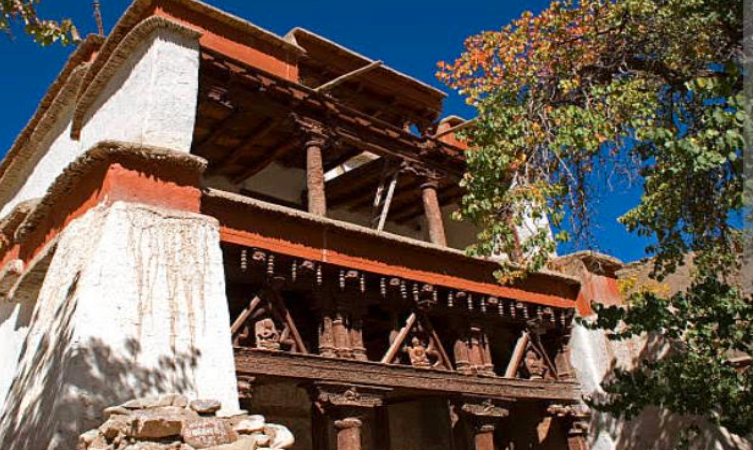
Alchi Monastery is one of the oldest and most renowned monastic complexes in Ladakh, dating back to the 10th to 12th centuries. Like most monasteries in Ladakh, the Alchi monastery stands on flat ground rather than on a mountainside. Guru Rinchen Zangpo built the monastery between 958 and 1055 AD. Alchi is famous for its exceptional and well-preserved ancient wall paintings, murals, and sculptures. These intricate artworks display a blend of Indian and Kashmiri artistic influences along with Tibetan Buddhist themes, making them historically and artistically significant. The monastery belongs to the Gelugpa sect of Tibetan Buddhism. It consists of three separate temples, known as the Dukhang, the Sumstek, and the Temple of Manjushri. They strictly do not allow photography inside the monastery. The Dukhang is the largest of the three temples, and it is where the monks congregate for prayer and meditation. The Sumstek houses a statue of Tsongkhapa, the founder of the Gelugpa school of Buddhism. The Temple of Manjushri contains a statue of the Bodhisattva of Wisdom. Visitors to the monastery can explore all three temples and learn about the history and culture of Buddhism in Ladakh. The monastery celebrates the Alchi Choskor Festival, where monks perform traditional Cham dances, rituals, and prayers. This annual festival attracts locals and tourists alike, offering insights into the region's cultural and religious heritage. Alchi Monastery is considered a spiritual and cultural treasure trove due to its ancient art, architecture, and religious artifacts. It is recognized as a UNESCO World Heritage Site for its historical and artistic importance.
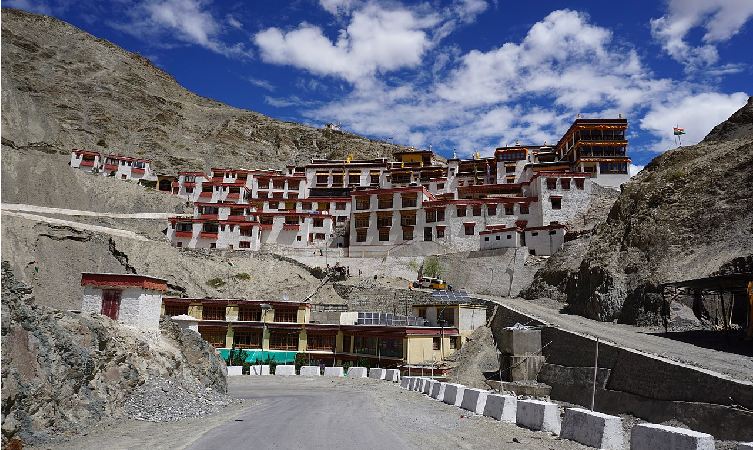
Rezong Monastery, nestled in the remote Rizong Valley, stands as a testament to the region's spiritual heritage and offers a peaceful retreat for those seeking solace and an authentic experience of Buddhist monastic life amidst breathtaking natural beauty. It is situated approximately 73 kilometers northwest of Leh, the capital city of Ladakh. Founded in the late 19th century, around 1831, Rezong Monastery belongs to the Gelugpa (Yellow Hat) sect of Tibetan Buddhism. The monastery was established by Lama Tsultim Nima, also known as Lama Tsultim Gyatso, who was a disciple of the famous Lama Tsongkhapa, the founder of the Gelugpa order. The primary focus of Rezong Monastery is on meditation and education. It serves as a monastic educational institution where monks undergo rigorous training in Buddhist philosophy, scriptures, meditation, and rituals. The monks follow a strict regimen that emphasizes meditation and spiritual practices, contributing to the peaceful and contemplative atmosphere of the monastery.The monastery houses a collection of ancient scriptures, thangka paintings, and statues of Buddhist deities, providing visitors with insight into Buddhist art and culture. Visitors can witness the daily routines of the monks, observe their meditative practices, and participate in spiritual discussions and ceremonies conducted by the resident lamas.
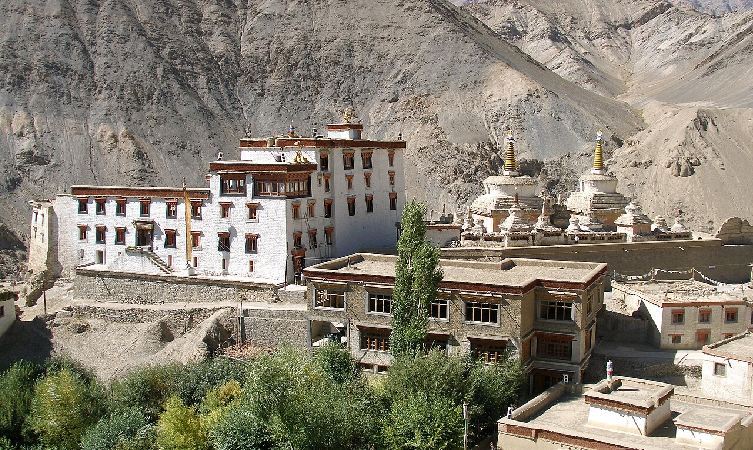
Famous as Tharpa Ling, the Lamayuru monastery is not only the oldest but one of the largest monasteries in Leh. The monastery is located at an altitude of 3,510 m and is amongst the most serene and tranquil Leh tourist places. Home to over 50 monks, it is a famous ancient Buddhist shrine and belongs to the Red-Hat Sect of Buddhism.
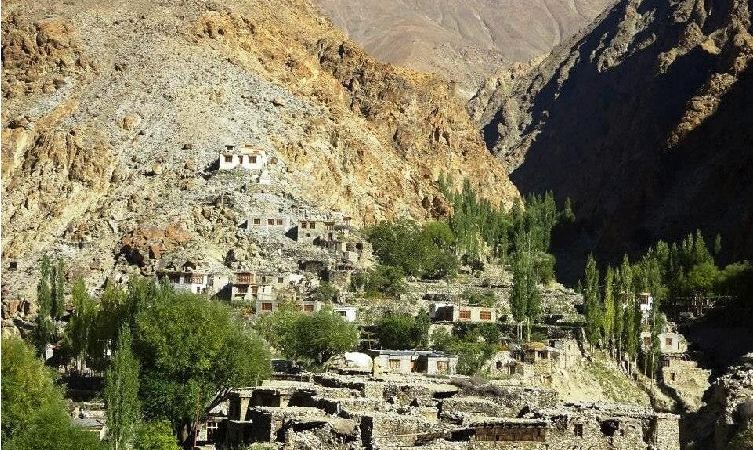
Dah-Hanu also known as Aryan Valley is a region in the lower part of the Ladakh located along the Indus River and is home to a group of villages inhabited by the Brokpa people, also known as the Dard people. The Brokpas are considered to be among the last pure Aryan descendants in the region and have distinctive physical features and cultural practices that set them apart from other Ladakhi communities. These communities have their unique language, dress, customs, and religious practices, contributing to their cultural significance.They have been preserving their unique culture and identity from centuries by practicing Polyandry in their small community. They have also preserved this century old traditions with the celebration of harvest and partly through their songs and hymns. The most striking features of Dha-Hanu people is their attire adorned with heavy jewelry and unique styled head wear decorated with colorful flowers and brass coins pasted on it.Dha Hanu has gained attention among tourists interested in exploring unique cultures and traditions, offering a chance to interact with the Brokpa community and understand their way of life.
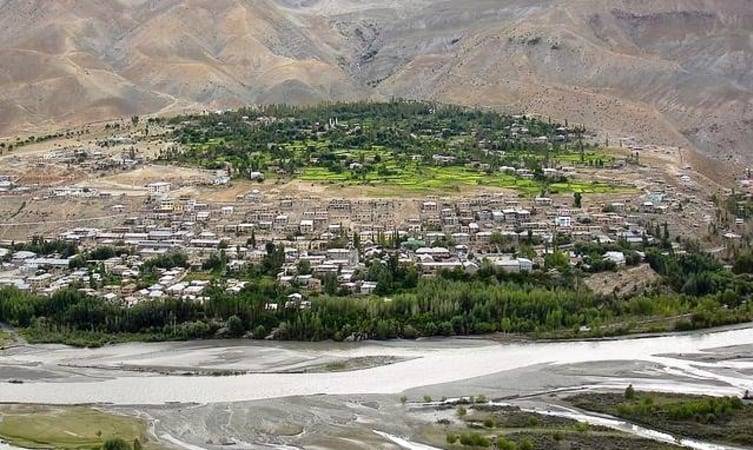
Famous for the very known Kargil War, Kargil is a city situated near the Line of Control (LOC) between Pakistan and India. It is the second largest town in Ladakh after Leh. With an elevation of 2676 metres, it is situated along the banks of Indus River. The sonder feeling that one gets after making a visit to the city of Kargil is beyond expression.
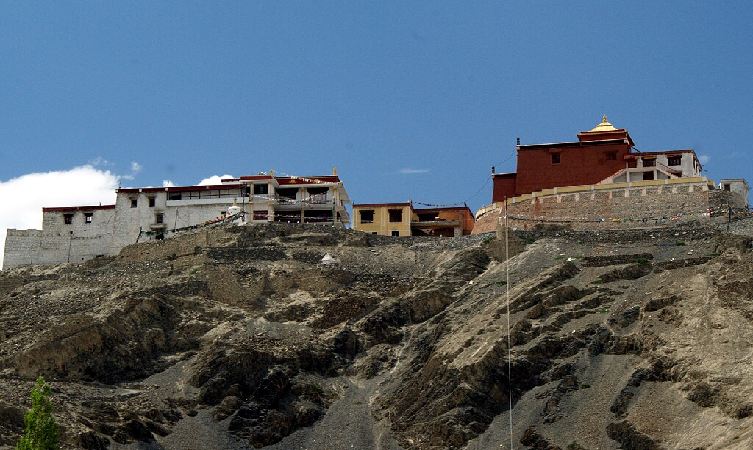
Tingmosgang Monastery dates back to the 1430s and was founded by King Dragpa Bum as his capital in the 15th century, who ruled over the area during that period.The monastery was established under the Gelugpa school of Tibetan Buddhism and is affiliated with the Drigung Kagyu tradition.Tingmosgang Monastery holds religious significance as a center for Buddhist teachings and spiritual practices. It serves as a residence for monks who engage in religious studies, rituals, and meditation practices following the Kagyu tradition. The monastery houses ancient scriptures, thangka paintings, statues of Buddhist deities, and other religious artifacts, providing insights into Buddhist art and culture.Visitors can witness the daily life of monks, attend prayer sessions, and explore the serene surroundings.
